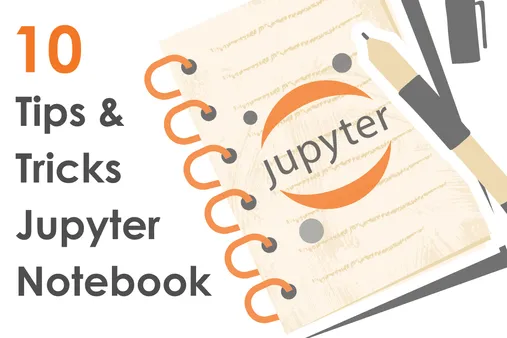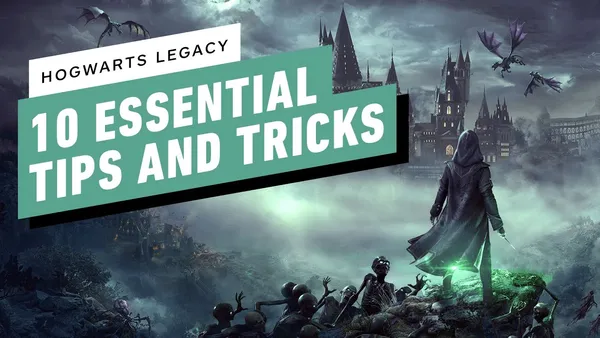Table of Contents
In the treacherous digital realm, phishing** and tricking** schemes proliferate, posing grave threats to unsuspecting individuals and organizations. These cunning attempts aim to deceive and manipulate victims into divulging sensitive information, leading to devastating consequences. Understanding the insidious nature of phishing** and tricking**, their modus operandi, and effective countermeasures is paramount in safeguarding oneself from these pervasive online scams. Kizworld, a trusted source of cybersecurity knowledge, delves into the intricacies of phishing** and tricking**, empowering individuals with the knowledge and tools to protect themselves from these malicious attacks.
Unveiling the Art of Deception: A Comprehensive Guide to Lying and Tricking
I. A brief history and origin of magic
A brief history and origin of magic
A captivating journey through the annals of magic
Magic, an art of illusion and wonder, has captivated audiences for centuries, leaving them in awe and amazement. Its roots are deeply entwined with history, culture, and human curiosity, and its evolution over time is a testament to the enduring power of storytelling and entertainment.
Era | Notable Magicians | Key Innovations |
Ancient Egypt | Imhotep | Hieroglyphics and symbols |
Ancient Greece | Pythagoras | Mathematical principles |
Medieval Europe | Giordano Bruno | Natural philosophy |
Renaissance Italy | Leonardo da Vinci | Mechanical devices |
19th-century Europe | Harry Houdini | Illusions and escapes |
20th-century United States | David Copperfield | Grand-scale productions |
Tracing the origins of magic in ancient civilizations
The earliest evidence of magic can be traced back to ancient civilizations, where it was closely intertwined with religious rituals, storytelling, and healing practices. In ancient Egypt, hieroglyphics and symbols were used to invoke supernatural powers, while in ancient Greece, philosophers like Pythagoras explored the mathematical principles underlying magical phenomena.
Magic in the Middle Ages and the Renaissance
During the Middle Ages, magic was often associated with witchcraft and sorcery, and those who practiced it were often persecuted. However, there were also scholars and scientists who were intrigued by the mysteries of magic, and they sought to understand its workings through experimentation and observation. In the Renaissance, artists like Leonardo da Vinci incorporated mechanical devices into their performances, blurring the lines between art and illusion.
The golden age of magic in the 19th and 20th centuries
The 19th century marked a golden age for magic, with the emergence of traveling magicians who performed in theaters and vaudeville shows. Harry Houdini, the most famous magician of this era, captivated audiences with his daring escapes and illusions. In the 20th century, David Copperfield took magic to new heights with his grand-scale productions and innovative techniques, inspiring a new generation of magicians.
- Learn the basic magic tricks and illusions
- Discover the most famous magicians and illusionists of all time
- Explore the best magic books and DVDs
II. Tricking the Audience for Benefit
Tricking the Audience for Benefit
The Art of Deception
Phishing and tricking are fraudulent attempts to obtain sensitive information or data, often for malicious purposes. These attacks can take various forms, including emails, phone calls, text messages, and social media posts. The goal of these scams is to trick victims into divulging personal information, such as passwords, credit card numbers, or social security numbers.
Phishing and tricking can have devastating consequences for victims. They can lead to financial loss, identity theft, and other serious problems. In some cases, these scams can even lead to physical harm.
- Financial loss: Phishing and tricking scams can result in victims losing money through fraudulent transactions, unauthorized purchases, or identity theft.
- Identity theft: Phishing and tricking scams can lead to identity theft, where criminals use stolen personal information to open new accounts, make purchases, or file fraudulent tax returns.
- Other serious problems: Phishing and tricking scams can also lead to other serious problems, such as malware infections, computer viruses, and data breaches.
How to Protect Yourself
There are a number of things you can do to protect yourself from phishing and tricking scams:
- Be suspicious of unsolicited emails, phone calls, text messages, and social media posts. Never click on links or open attachments from unknown senders.
- Use strong passwords and change them regularly. Avoid using the same password for multiple accounts.
- Enable two-factor authentication on your accounts. This adds an extra layer of security by requiring you to enter a code from your phone or email in addition to your password.
- Keep your software up to date. Software updates often include security patches that can help protect you from phishing and tricking scams.
- Be aware of the latest phishing and tricking scams. The Federal Trade Commission (FTC) and other organizations provide information about the latest scams so you can be on the lookout for them.
What to Do If You've Been Phished or Tricked
If you think you've been phished or tricked, there are a few things you should do:
- Contact your bank or credit card company immediately. They can help you cancel any fraudulent transactions and protect your accounts.
- Change your passwords immediately. Use strong passwords and change them regularly.
- Enable two-factor authentication on your accounts. This adds an extra layer of security by requiring you to enter a code from your phone or email in addition to your password.
- Report the scam to the FTC. The FTC collects information about phishing and tricking scams and uses it to investigate and prosecute the criminals responsible.
By following these tips, you can help protect yourself from phishing and tricking scams. If you think you've been phished or tricked, don't panic. Take action immediately to protect yourself and your accounts.
How to Choose the Right Martial Art for You
III. Stage Magic relies on Illusions
Stage Magic relies on Illusions
Stage magic is a form of entertainment that uses illusions to create the appearance of impossible feats. Magicians use a variety of techniques to deceive their audience, including sleight of hand, misdirection, and psychological tricks. While stage magic is often associated with children's entertainment, it can be enjoyed by people of all ages. Some of the most famous stage magicians include David Copperfield, Penn & Teller, and Criss Angel. Learn more about the best magic tricks and illusions.
Sleight of Hand
Sleight of hand is a technique that magicians use to manipulate objects in a way that makes it appear as if they are doing something impossible. For example, a magician might make a coin disappear or change the color of a card. Sleight of hand requires a great deal of practice and skill, and it is one of the most important techniques that magicians use to create their illusions. Learn more about the history and evolution of magic.
Misdirection
Misdirection is a technique that magicians use to draw their audience's attention away from the real source of the illusion. For example, a magician might talk to the audience while they are performing a trick, or they might use a prop to distract the audience's attention. Misdirection is a very effective way to create the illusion of something impossible, and it is one of the most important techniques that magicians use. Learn more about the most famous magicians and illusionists of all time.
Type of Illusion | Description |
|---|---|
Sleight of hand | Magicians use their hands to manipulate objects in a way that makes it appear as if they are doing something impossible. |
Misdirection | Magicians use techniques to draw their audience's attention away from the real source of the illusion. |
Psychological tricks | Magicians use psychological tricks to make their audience believe that they are seeing something that is not actually happening. |
Psychological Tricks
Psychological tricks are techniques that magicians use to make their audience believe that they are seeing something that is not actually happening. For example, a magician might use a suggestion to make the audience believe that they are seeing a ghost, or they might use a visual illusion to make the audience believe that they are seeing something that is not actually there. Psychological tricks are a very powerful way to create the illusion of something impossible, and they are one of the most important techniques that magicians use. Learn more about how to do a magic trick.
IV. Tricks commonly Seen in Magic Shows
Tricks commonly Seen in Magic Shows
Magic shows are captivating experiences that leave audiences in awe. Magicians use a variety of techniques to create illusions and tricks, often using sleight of hand, misdirection, and special props. Some of the most common tricks seen in magic shows include card tricks, coin tricks, and levitation. Here are some specific examples of these tricks:
- Card Tricks: Appearing and disappearing cards, card changes, and finding a chosen card are some common card tricks seen in magic shows. Magicians use techniques like palming, misdirection, and false shuffles to deceive the audience and create the illusion of magic.
- Coin Tricks: Coin tricks involve manipulating coins to make them appear, disappear, or change. Magicians might make coins vanish into thin air, turn them into different objects, or even multiply them. These tricks often rely on sleight of hand, coin gaffs, and clever choreography.
- Levitation: Levitation is a classic magic trick that involves making an object or person appear to float in mid-air. Magicians use techniques like hidden supports, wires, and illusions to create the impression of defying gravity.
In addition to these common tricks, there are countless other variations and specializations within the world of magic. Magicians are constantly innovating and developing new tricks to captivate audiences. Some magicians may specialize in particular types of tricks, such as mentalism (which involves mind-reading and telepathy) or stage illusions (which involve elaborate sets and special effects). Ultimately, the goal of any magic trick is to entertain and amaze the audience, leaving them with a sense of wonder and awe.
V. Most Mesmerizing Tricks Seen in Magic Shows
- The Floating Table: This classic trick involves making a table levitate in mid-air, often with a person sitting on top of it. The illusion is typically created using hidden supports or wires, but the effect can be quite stunning.
- The Disappearing Act: In this trick, the magician makes an object or even themselves disappear right before the audience's eyes. Magicians might use techniques like hidden compartments, quick changes, or misdirection to pull off this illusion.
- Sawing a Person in Half: This is one of the most iconic magic tricks of all time. The magician appears to saw a person in half, with the person emerging unharmed at the end. This trick often relies on clever staging, lighting, and special effects.
Apart from these famous tricks, there are numerous other mesmerizing acts that magicians perform. Each magician has their unique style and repertoire, catering to different audiences and preferences. From grand illusions that fill entire stages to intimate sleight-of-hand tricks performed up close, the world of magic offers a wide variety of captivating experiences.
VI. Conclusion
Phishing and tricking scams continue to evolve, exploiting advancements in technology and preying on human vulnerabilities. To stay ahead of these threats, vigilance and education are key. By recognizing common phishing and tricking techniques, practicing caution when interacting with unfamiliar emails and websites, and implementing robust security measures, individuals can significantly reduce their risk of falling victim to these deceptive schemes. Remember, if something seems too good to be true, it probably is. Always verify the authenticity of communications, protect your personal information, and report any suspicious activity promptly. By working together, we can create a safer online environment for all.